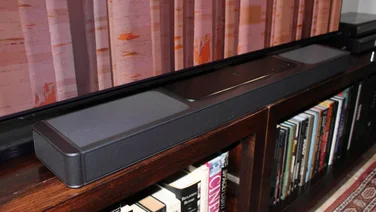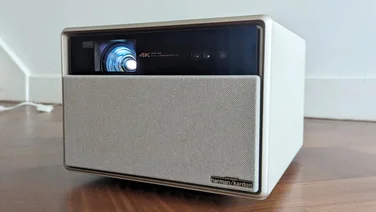To help us provide you with free impartial advice, we may earn a commission if you buy through links on our site. Learn more

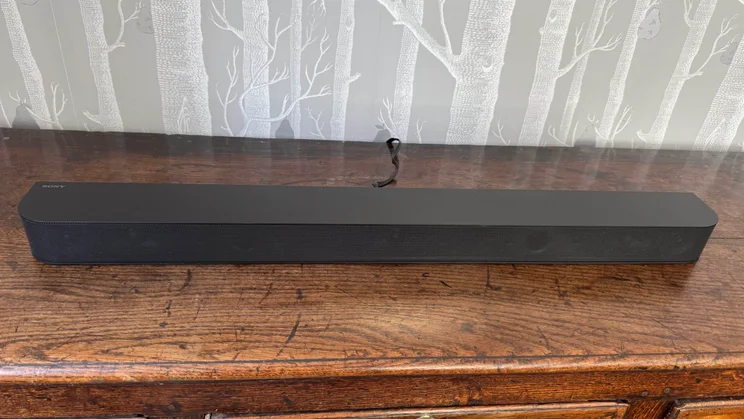
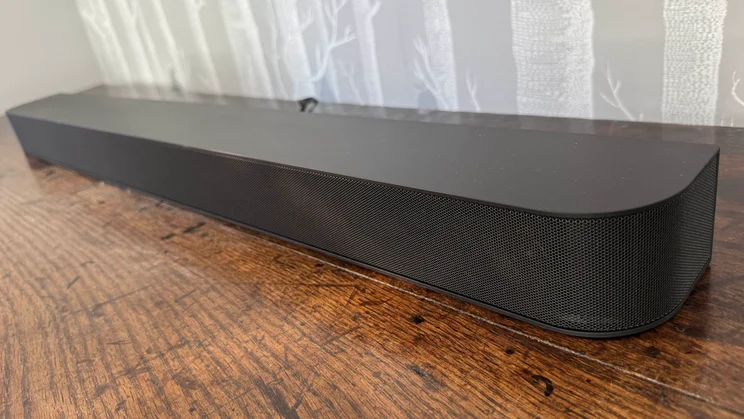
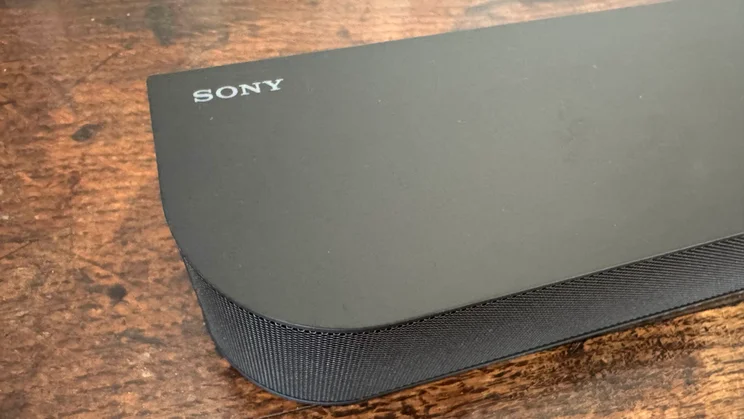
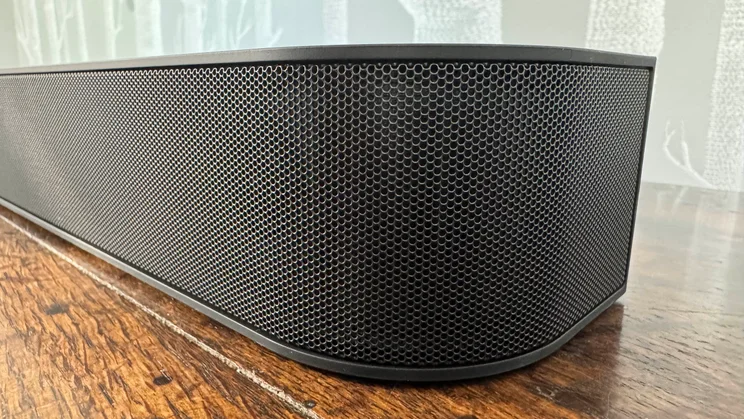
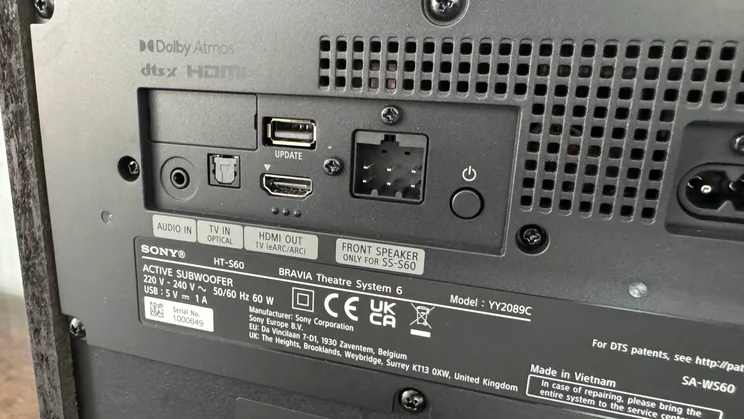
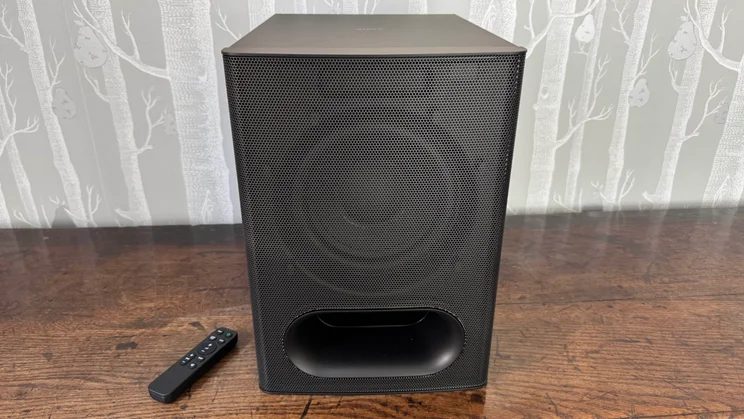
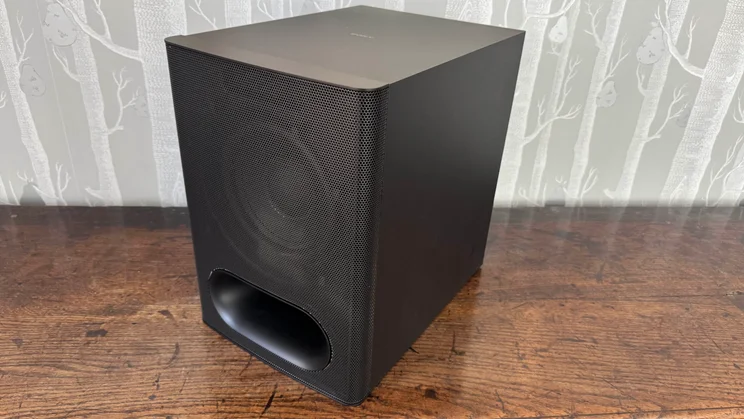
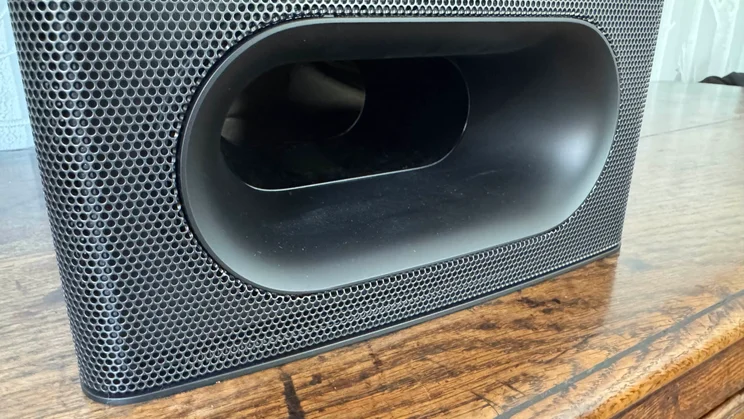
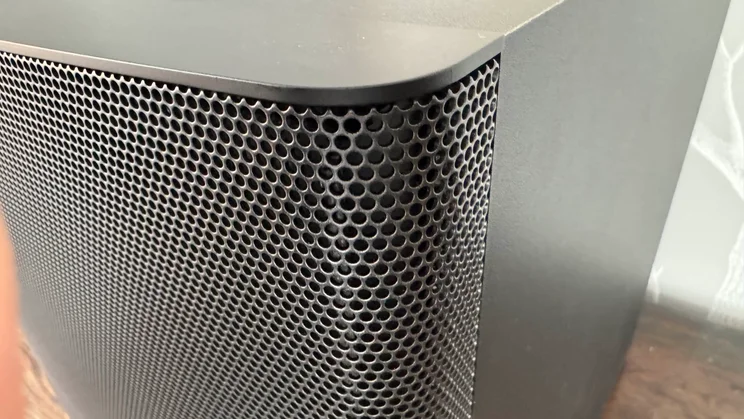
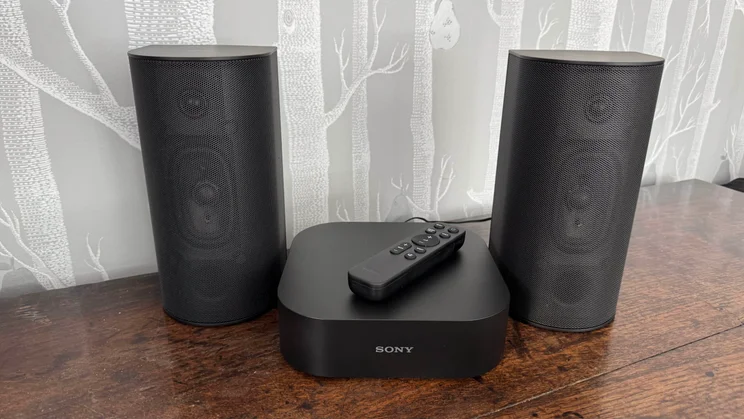
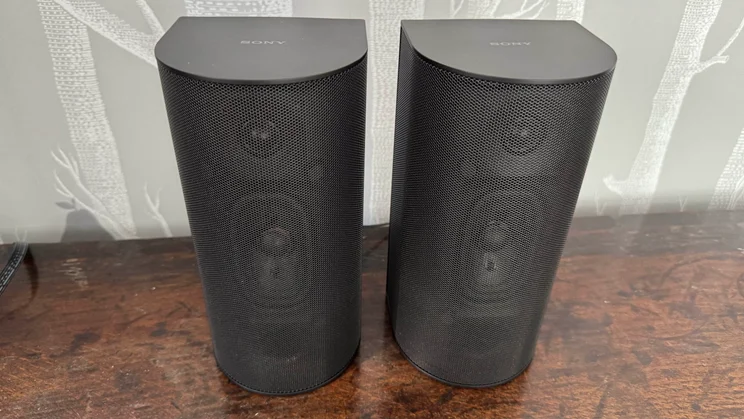
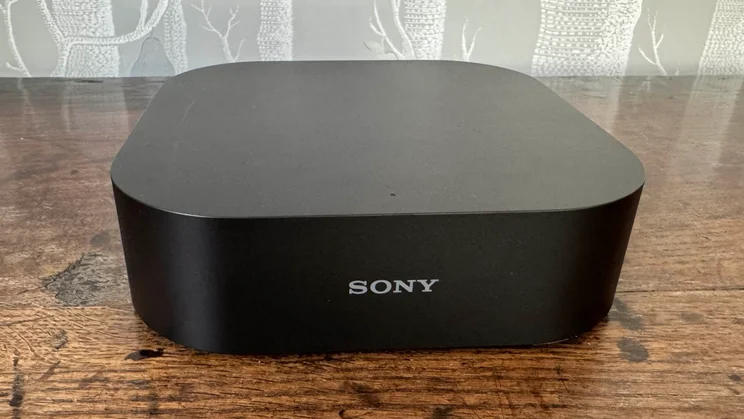
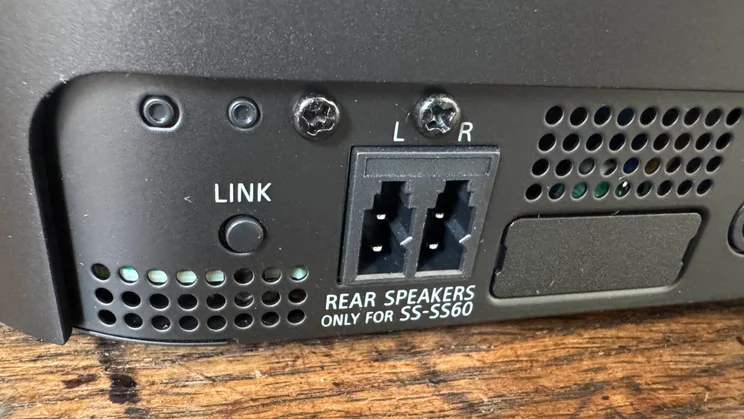

- Brilliantly muscular movie performance
- Natural and refined music performance
- Great value
- The subwoofer is huge
- It’s a proper cable fest
- No HDMI passthrough
The Bravia Theatre System 6 switches from the established Sony formula of focusing on a single powerful soundbar and then offering external rear and subwoofer speakers as optional extras. Instead, the Theatre System 6 delivers a genuine all-in-one-box experience, complete with an included subwoofer and rear speakers.
What’s more, while turning Sony soundbars into full surround packages is typically an expensive endeavour, the Theatre System 6 is available for very reasonable money: £549 to be exact. That price starts to look even more appealing when you learn that the system’s 5.1-channel sound is propelled around your room by a claimed 1,000W of audio power.
What you need to know
The Bravia Theatre System 6 is a four-piece, 5.1-channel soundbar package comprising the main soundbar, a subwoofer that also carries all the system’s external source connections, and a pair of rears that need to be tethered to an external Wi-Fi receiver.
It doesn’t support Sony’s 360 Spatial Sound technology like the brand’s more premium soundbars do, meaning it doesn’t create the same remarkably believable roster of virtual speakers around your room. However, it does feature Sony’s older and still quite effective Vertical Surround Engine attempt at the same idea, as well as Dolby Speaker Virtualisation and DTS Virtual:X alternatives.















The soundbar can also decode Dolby Atmos and DTS:X soundtracks, although, unlike Sony’s more premium soundbars, there are no physical up-firing channels in this system.
The System 6 supports a solid mix of both physical and wireless audio connections, and I’ve saved arguably its single most eye-catching feature till last: a vast claimed total power output of 1,000W. Let’s hope there’s some quality to go with all that potentially brutal quantity.
Price and competition
The System 6’s asking price puts it at the lower end of mid-range soundbar territory, a position that looks particularly enticing when you consider you’re getting a full surround sound setup promising such sonic potency.
Sony’s Bravia Theatre Bar 8 and Bravia Theatre Bar 9 are much more expensive at £799 and £1,399 respectively, despite both being single-bar solutions without any external rear or subwoofer speakers included. There are various rear and subwoofer speaker options you can add to them, but if you go that route, the price starts to stack up.
Closer rivals for the System 6 would be the original Sonos Arc, a strong single-bar option now available for under £600, and Samsung’s HW-S800D, which gets remarkable power and precision out of an ultra-slim bar-plus-subwoofer combination costing £549.
As far as full surround packages go, there aren’t maybe compelling alternatives to be had for similar money to the System 6, but the 5.1.2-channel Hisense AX5125H is worth every penny of its much cheaper £250 price tag.
Design and features
The System 6 certainly isn’t the most stylish home theatre audio solution around. Aside from the two identical rear speakers, none of the components look like they were styled to belong together. While the main soundbar is strikingly small, the subwoofer is a hulking monster of a thing. The twin rear speakers have a more demure appearance, but their rounded front edges and metallic black grilles finish don’t tie in with the rest of the setup.
The good news is that none of the elements, even the unapologetically massive subwoofer, look ugly. The main bar’s eye-catching compactness benefits from some nice rounding off of its left and right ends, and its mix of a metallic grilled front and sides against a matt black top edge creates a neat contrast. It’s handy, too, that Sony has provided a pair of short supports you can attach to the bar’s underside so that it can lie across the feet of a Sony TV. The only design niggle about the main bar is that the top panel looks and feels a bit like MDF.















The sub’s huge body features plenty of MDF-like material too, but the chunky metallic grille over its front-mounted driver and huge port along its bottom edge give it a sort of industrial appeal, provided you can cope with its enormity.
Cable haters should bear in mind that the System 6 is only a wireless surround sound system in the most minimal of ways. The subwoofer can share sound wirelessly with an external wireless reception box (yes, that’s a further box you need to accommodate) that then has to pass the sound to the rear speakers via long cables. Even the subwoofer and main bar have to be physically tethered to each other.















The 1,000W of claimed power is delivered across 5.1 channels by 10 separate speaker units. The channels comprise front left, front right, front centre, rear left, rear right and the .1 subwoofer. To reiterate a point I made earlier, there are no up-firing speakers to deliver Dolby Atmos height effects. So anything experienced in that respect will be down to the Sony Virtual Surround Effect, Dolby Speaker Virtualisation or DTS Virtual:X processing. For me, Sony’s VSE system gave the most consistently enjoyable results of these three systems.
Sony has equipped the System 6 with three different ways of playing stereo music, one of which sticks with a native stereo configuration. The other options allow you to engage an Upmix setting that converts tracks into surround sound using real-time processing, or go for a multi-stereo option where the stereo effect in the front speakers is repeated in the rear speakers for a more party-friendly experience.
There are also Night mode and Voice mode options, which do exactly what they say on the tin, as well as the option to call in Sony’s impressive DSEE technology. This seeks to reintroduce the more extreme frequencies of sound typically lost during compression processes.
Connections and control
The System 6 isn’t particularly rich in connections. The subwoofer, which is the System 6’s connections and sound distribution hub, only carries a single HDMI. So, unless you have a source with two HDMI outputs, one for audio and one for video, you’ll need to use your TV’s eARC HDMI port to get sound into the soundbar while also enjoying the accompanying video.
Besides this HDMI, you get an optical digital audio TV input, a 3,5mm audio input, a USB port for software update use only, and an unusual six-pin jack where the main soundbar connects. There’s also support for Bluetooth 5.3, so you can stream music from your smart devices.















The System 6 ships with a cute, comfortable and tactile little remote control, though you can also control it via Sony’s Bravia Connect app. I’d strongly recommend that this app becomes your main control option, since, as well as providing a few unique features, it compensates nicely for the lack of any LED display built into either the main soundbar component or the subwoofer.
The app also makes it easier to tweak such key set-up options as the relative volume of each speaker and the distance each speaker is from your seating position. Though perhaps not surprisingly for such an affordable surround soundbar, there’s no auto calibration system.
Sound quality
While the various elements of Sony’s System 6 might not look like they particularly belong together, they certainly sound like they were made for each other.
Kicking things off with a selection of favourite film mixes, the first thing I noticed was how potent the giant subwoofer is. Using the system’s default settings, the sub reached depths and volumes of bass that set objects in the test room rattling that I’ve never heard rattle before. Not even with the subs you get with Samsung’s spectacular HW-Q990 flagship models.















There’s no sense of the System 6’s prodigious bass hitting any sort of forced bass floor, either; low-frequency sounds always roll out smoothly and cleanly, even at high volumes. Nor is there anything particularly crude about the System 6 subwoofer’s sound. It’s nimble enough to move frequency up and down as a mix requires, and never sounds detached from the lower frequencies delivered by the main soundbar component. It also never seems to be operating in a separate world from the rest of the system’s speakers, despite their vast size difference.
Helping the subwoofer blend in so well is the way the main soundbar section sounds significantly bigger than it looks. Its drivers manage to not only handle enough power to get loud without distorting, but also push their sounds out with real force and impact, so that they spread far and wide into and across your room.
There’s a sense of verticality to this large sound stage, too, despite the system’s lack of any real up-firing drivers or Sony’s 360 Spatial Sound processing. Raindrops seem to be cascading down from above your TV, and voices tend to sound as if they’re coming from the screen rather than the soundbar.















Vocals are always clean without becoming too bright or lacking in audio context, too, while classic impact sounds like punches, gun shots and explosions are delivered with plenty of snap and pressure. The rear channels play their part excellently, too, achieving more dynamic range, projection and clarity than I’d expected from such relatively small units. The surprising potency of the rears means you end up with a quite convincing surround soundstage that plays very nicely with Dolby Atmos and DTS:X soundtracks.
The System 6 has the power to shift convincingly through plenty of gears to cope with expanding action and horror scenes, adding pressure and volume incrementally without falling away when the going gets tough.
There are, of course, some limits to the System 6’s movie performance. Deep bass can sound a little directional at times, as if it’s coming from the subwoofer, rather than just rolling free across your room. Sounds that move or pan around the soundstage can reveal some gaps in the Dolby Atmos and DTS:X hemisphere of sound, too, though the power and projection of the speakers hide this limitation of the 5.1-channel speaker setup during more general soundtrack moments.















While the speakers typically deliver plenty of detail without sounding forced or harsh, just occasionally, a sudden loud burst of sound can cause the main bar’s speakers to momentarily sound a bit hard-edged. I also very occasionally felt aware of a marginal lag between the sound and pictures when connected to a Samsung TV via its eARC port. But this was so slight that I only felt even vaguely aware of it a handful of times during my testing period.
The System 6’s performance with music is arguably its single biggest and best surprise. The subwoofer can tone itself down superbly, switching effortlessly from delivering the deep, extended rumbles needed for movie soundtracks to the more varied, lighter, faster bass beats associated with music. Provided you’ve got its relative volume set to its default 0 position or -1, which I preferred for movies, it adds its low-frequency contributions to music playback without drawing undue attention to itself or slipping out of time with the rest of a music track.
This leaves you free to appreciate the startlingly musical capabilities of the main bar. With the System 6 running in its basic Stereo mode, the bar’s general sense of timing is great and left and right separation is excellent. Vocals remain clear and perfectly placed at the heart of the mix, but never become overly bright or detached. Sibilant music sounds like cymbals are clear but not exaggerated, dense layered tracks don’t become muffled unless you push them to silly volume levels, and everything hangs together beautifully in a natural and immersive fashion.















The Multi-Stereo setting proves a great option if you’re wanting to extend music across a really big room, with the rear speakers again proving how good they are at tonally matching the sound from the main soundbar, and painting a compelling stereo soundstage in their own right.
The Upmix option is less successful. There are some clever things about it, especially when it comes to picking out the best elements of a mix to steer into the rear speakers, and figuring out the appropriate volume balance to apply to its remixed elements. There’s a strangely beguiling sense of three-dimensionality and depth to the front soundstage with music played in Upmpix mode, too.















However, vocals tend to become slightly muffled as they become blended within the other mix elements, and bass and lower mid-range sounds can start to appear too dominant. This is most evident with fast rock or indie-type music. It’s worth noting, too, that if you try using DTS Virtual:X rather than Sony’s default VSE system, the sound becomes weirdly quiet and muted.
While these assorted issues left me sticking with stereo playback most of the time, the Upmix is worth trying out. And ultimately, nothing should distract you from the fact that while not all of the System 6’s supplementary features are a total success, its ability to switch between movie and stereo music duties is almost ridiculously good for its money.
Verdict
Sony has finally answered the prayers of AV fans, including myself, by releasing a soundbar that offers a full surround experience right out of the box. Not only has it done that, but it’s also made the Bravia Theatre System 6 both unexpectedly affordable and remarkably good at adapting to both movies and music.




